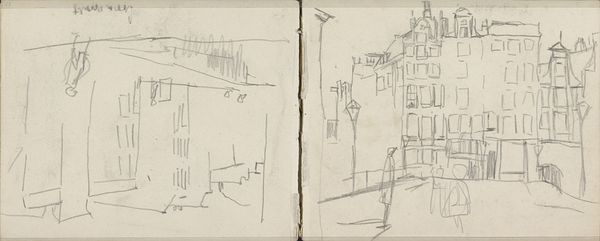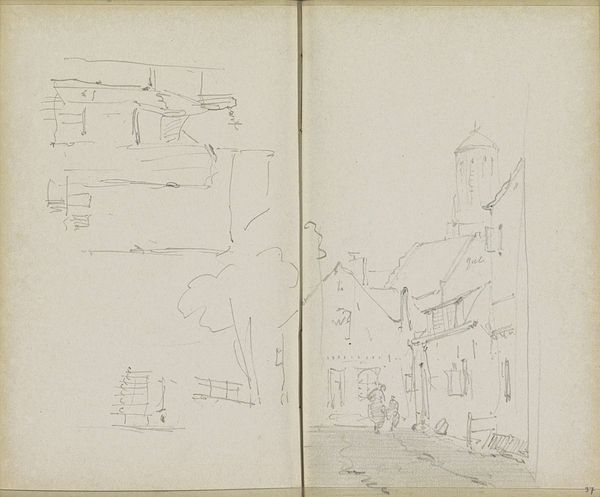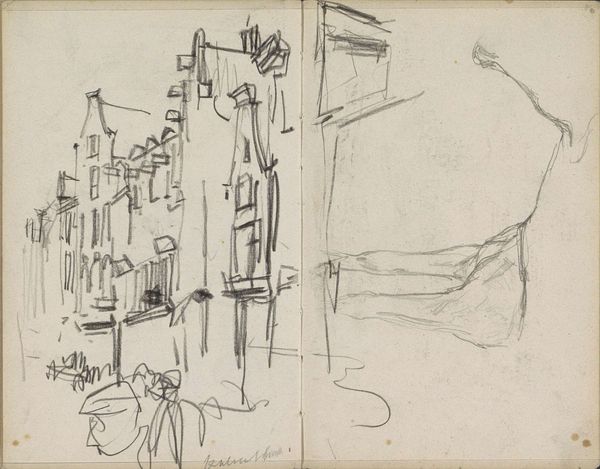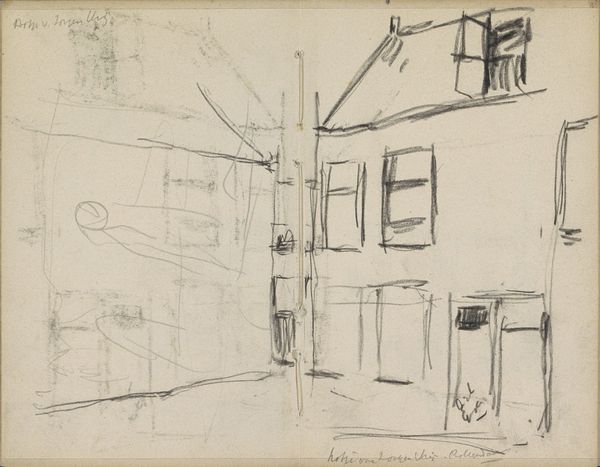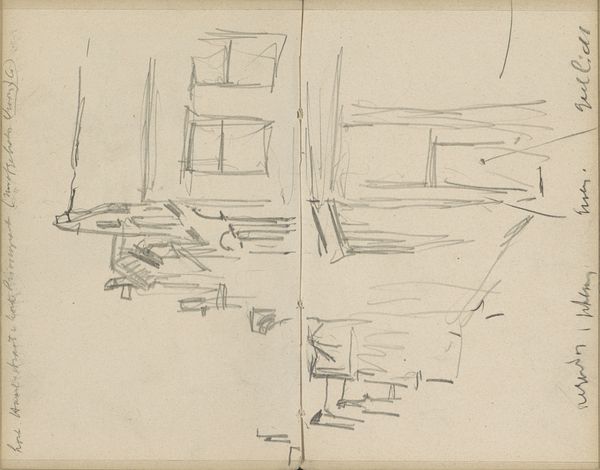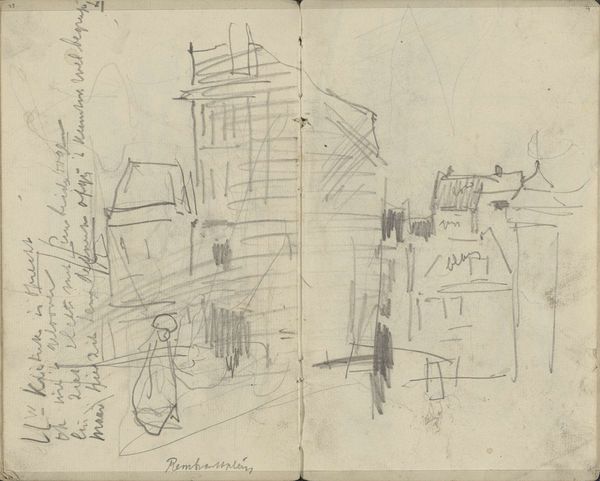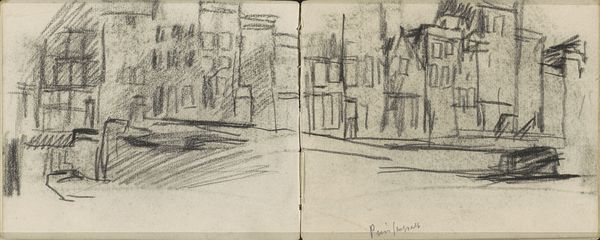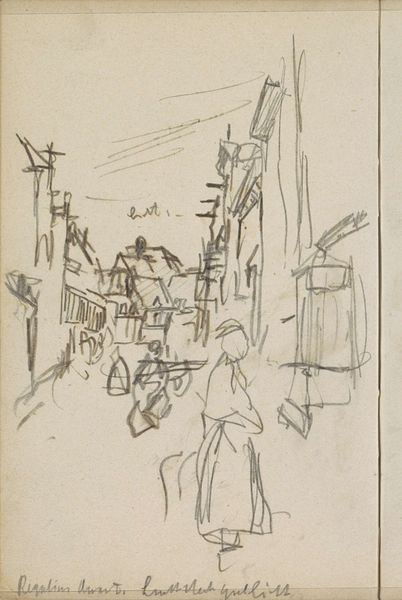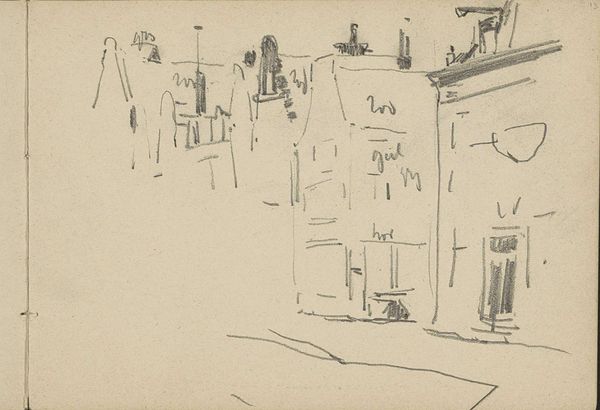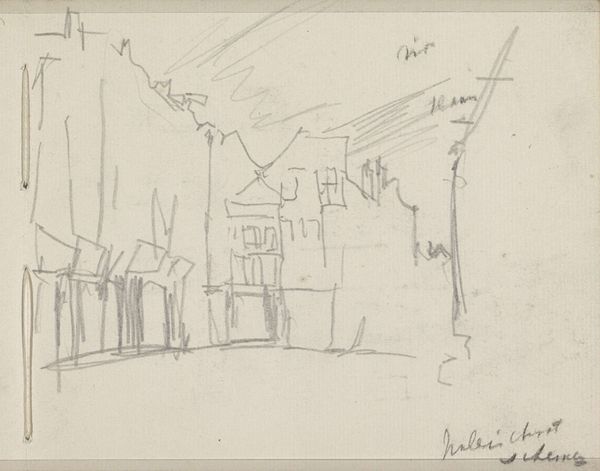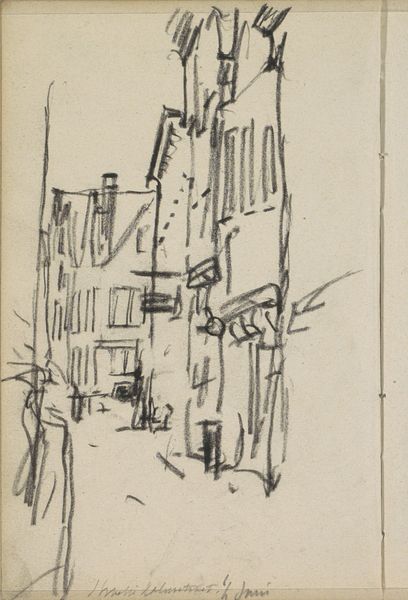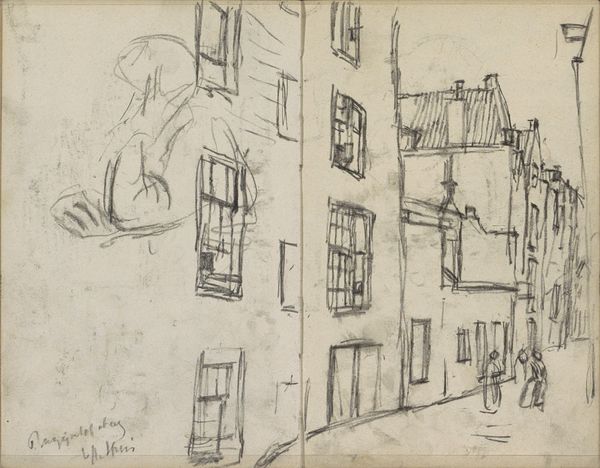
Copyright: Rijks Museum: Open Domain
Curator: The work before us is titled “Gezicht op de Baarssteeg in Utrecht,” or “View of the Baarssteeg in Utrecht,” a pencil drawing made by George Hendrik Breitner between approximately 1902 and 1914. Editor: There's something so immediate about this sketch; the brisk strokes of the pencil suggest a fleeting moment captured on paper. It feels very intimate. Curator: Breitner was deeply interested in portraying everyday life in Dutch cities. His work shows the changing urban landscape at the turn of the century, reflecting societal shifts. He often captured these scenes en plein air, sketching them on the spot and then developing them later. Editor: Look at the minimal use of shading, the simplicity of lines used to evoke buildings, figures, and even the atmosphere. It is clear this isn’t meant to be “precious,” but more of an exercise in capturing a visual note from daily life to study later on. The sketchbook quality emphasizes that art is made, it doesn't just appear. Curator: Indeed. Breitner’s background in applied arts strongly informed his understanding of labor in art production. Unlike some artists who valorized the finished product, he seemed intent on revealing the means of production, placing value on the sketching and documentation stage. Editor: It really makes you think about who this work was for. It clearly wasn’t created for some high-end gallery. I bet it helped him conceptualize larger pieces later on. Also, Utrecht had gone through some development already in the late 1800's; how did it evolve as a tourist destination? Breitner, like many artists, found new ways to interpret older cities in times of industrial boom. Curator: Certainly. These raw, unfiltered sketches gave Breitner freedom from commercial constraints, allowing him to capture slices of Dutch urban life with a directness not often seen. The very act of sketching then becomes a form of social commentary. Editor: Precisely, and by allowing us this peek into his creative practice, Breitner challenges us to see value in both the labor of art making and the quotidian aspects of the city. Curator: Looking at it now, it bridges artistic vision and societal awareness and helps us rethink the interplay between art, labor, and cultural documentation. Editor: I’m going to seek out more information about urbanization in Utrecht to help get some of these details in sharper focus. Thanks!
Comments
No comments
Be the first to comment and join the conversation on the ultimate creative platform.
